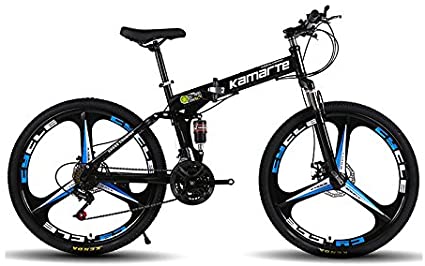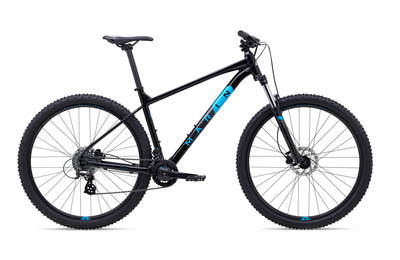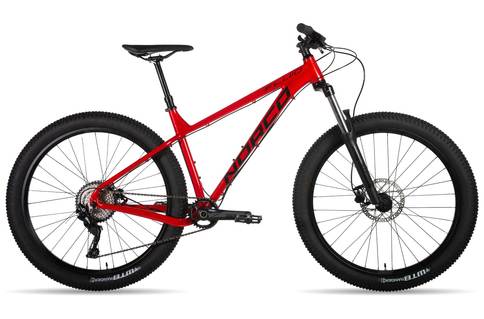The Buyers Guide for the 26″ Versus the 27.5″ Versus the 29″ Mountain Bikes
If you have decided to upgrade your current mountain bike or you are a newbie to mountain biking, you may be confused by the variety of options available today. Over the last decade there has been various sizes, designs and options that have flooded the markets. For this reason this article will offer you with an easier way to understand, which will hopefully make your decision on buying either a 26”, 27,5” or 29” an easier choice.
About The 26” Mountain Bikes

For a number of decades now the 26” mountain bikes have been the typical standardized size for the majority of the mountain bikes. However, this all changed when in the year 2010 the 29er which is the 29” mountain bike entered the market and later in 2013 the 27.5” started to become an alternative that gained much popularity.
Typically speaking the 26” mountain bikes were suitable for twitchy and fast terrain that necessitates that a rider should be able to react fast. However, on the downside, the 26” mountain bikes feature top speeds that are slower and the wheels which are smaller often offer disadvantages over rocks, roots and bumps. Below are some of the pros and cons about the 26” mountain bikes:
Pros
- These bikes typically weigh less than the 29” and 27.5” bikes due to the smaller forks and wheels that save on weight
- The smaller wheels on these bikes are regarded as a better option for terrain that is technical and requires a faster reaction time
- These bikes suit just about any type of rider size, where the larger mountain bikes such as the 29” are often not suitable for smaller riders
- These bikes also offer an increase in lateral strength for the riders that require a high travel FR or DH bike
Cons
- The bike is not forgiving when it travels over obstacles such as roots, rocks and bumps
- The top-end speed is slower when compared to the bikes that feature larger wheels
- The small wheels need added suspension in order to take the terrain. This typically results in a decrease in efficiency related to the suspension resulting in pedal bob
- The decreased tire-footprint results in less traction
About The 27.5” Mountain Bikes

In the biking season of 2010, 29er mountain bikes started to gain popularity due to the wheel size that was larger that offered a variety of riders various advantages when compared to the traditional 26” mountain bike. However, not all riders agreed that these advantages offered them more benefits. This resulted in the rise of the 27.5” mountain bikes also known as the 650b mountain bikes in an attempt to combine the disadvantages and advantages of both the 29” and 26” mountain bikes to offer riders the best parts of both these bicycle designs. The theory of the 27.5” bike is based on meeting somewhere in the middle.
Pros
- Offers an increase in top speed when compared to the 26” mountain bikes while simultaneously having a faster reaction time over the 29” bikes
- These bikes offer a better ride over bumps, rocks and roots
- The bigger wheels offer a decrease in suspension required which contributes to an increase in the bikes overall efficiency
- A good choice for the smaller riders that are looking for a bigger bike but are unable to use a 29” bike
Cons
- While offering a better ride over obstacles over the 26” mountain bike, the 27.5” is still not as forgiving when compared to the 29”
- While possessing a better traction when compared to the 26” bikes, the 29” still have the best traction due to the largest wheel size
About The 29” Mountain Bikes

The 29” mountain bikes began to gain popularity over the 26” mountain bikes in around 2010 due to their various advantages over the traditional 26”. One of the main advantages would be the ability to reach far higher top-end speeds because of the larger wheels. It is typically understood that 29” bikes that feature a 100-120mm travel can be compared to feeling extremely similar to the 140mm travel on a 26” mountain bike. Therefore, riders on 29” bikes are able to accomplish more in less travel time.
Pros
- Fastest top-end speed when compared to the 26 and the 27.5”
- The 29” bikes offer the most forgiving ride when it comes to traveling over rocks, bumps and roots
- Larger wheels result in less suspension needed to travel, which results in a decrease in pedal bob as well as increased efficiency
- Ideal for taller riders
- The tire footprint offers an increase in traction ideal for descending and climbing
- A more efficient option for the longer rides
- An increase in rotational weight
Cons
- The bigger wheels often make the 29” mountain bike slow to react to fast or twitchy terrain
- These bikes are not recommended for smaller riders
- The larger frame, fork and the wheels typically add more weight to the overall- build of the bike
- These bikes offer a slower acceleration off-the-line when compared to the 26” and the 27.5” mountain bikes
- Typically not a suitable option for the FR and DH riders
Conclusion
When deciding on a mountain bike for your specific needs it is always important to realize that there is not a “perfect bike” for each rider and each of the designs come with its own unique pros and cons. For this reason it is important to consider what type of rider you are the terrain you plan to ride on and what you may be looking to get out of the bike such as a more comfortable ride or a faster speed. Hopefully the advice offered in this article will assist you in making a decision on what type of mountain bike will suit your needs. When possible when shopping for a new mountain bike ask about taking the different options out for a test ride to decide on which option is most comfortable for you.



Leave a Reply